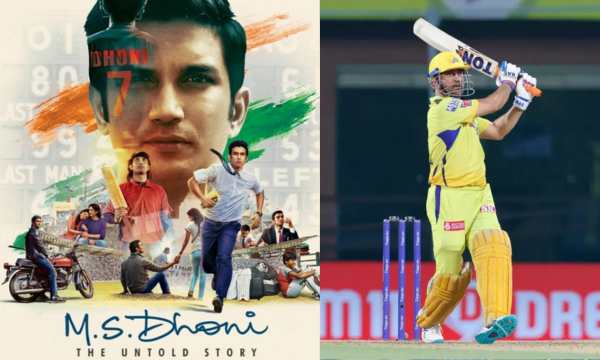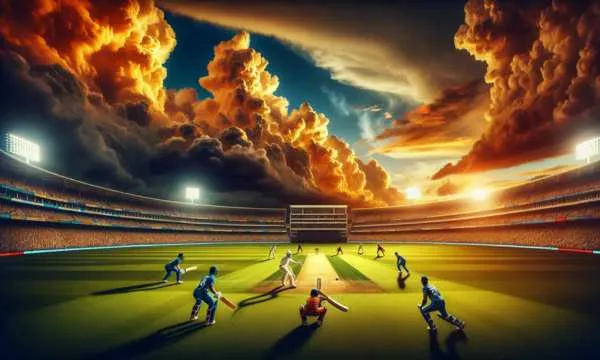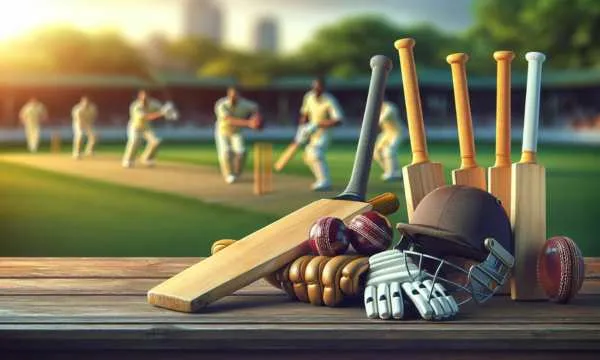Get to Know the India National Cricket Team in Detail
The India National Cricket Team fascinates millions of fans with its extraordinary journey of overcoming odds in world cricket.
Ad
The “Men in Blue” carry the hopes and dreams of over a billion Indians in every match.
Their evolution from underdogs to a dominant powerhouse reflects India’s own transformation on the global stage.
Join us on this fascinating journey through the behind-the-scenes, achievements, and cultural impact of this iconic team that revolutionized international cricket.
The Historical Journey of the India National Cricket Team
The journey of the India National Cricket Team officially began in 1932 when they played their first Test match against England at Lord’s.
Those early years were marked by significant challenges and scarce victories against established powers. The 1970s witnessed the emergence of exceptional talents like Sunil Gavaskar and Kapil Dev.
The most emblematic achievement of this period came in 1983 when the Indian team surprised the world by winning the World Cup against the favorites, West Indies.
This victory completely transformed the country’s relationship with the sport.
The early 2000s brought the golden era under the leadership of Sourav Ganguly. The team solidified its reputation with historic overseas victories.
The second world title came in 2011 when the India National Cricket Team won the World Cup at home, a moment of redemption for Sachin Tendulkar.
The Legends that Defined the India National Team
The greatness of the India National Cricket Team was built on the shoulders of extraordinary players who transcended the sport.
Sachin Tendulkar, revered as the “God of Cricket,” set virtually every batting record during his 24-year career. His unwavering dedication and humility inspired entire generations of Indian players.
Kapil Dev revolutionized the role of Indian all-rounders, leading the improbable 1983 World Cup victory. Sunil Gavaskar redefined the art of technical batting against relentless pace attacks.
Anil Kumble, India’s greatest Test wicket-taker, demonstrated unparalleled perseverance throughout his career.
The modern era brought icons like Rahul Dravid, “The Wall,” known for his impeccable technique and calm temperament.
MS Dhoni established himself as the most successful captain, introducing a calm and calculative leadership style.
Virat Kohli raised fitness and power standards, transforming the India National Cricket Team into a combative unit.

Tendulkar-Dev-and-Gavaskar-(Source-Google))
Playing Style and Field Philosophy
The India National Cricket Team has undergone a remarkable evolution in its playing style over the decades.
Traditionally known for their batting excellence and spin bowling dominance, the Indians developed a much more balanced approach in the 21st century.
Under the leadership of different captains, the team’s philosophy adapted significantly. Sourav Ganguly instilled a robust and competitive mentality that challenged established powers.
MS Dhoni brought calculative calmness and innovative strategic approaches, especially in limited formats. Virat Kohli implemented a strict fitness culture and relentless winning mentality.
India’s fast bowling attack has evolved dramatically in recent years. Players like Jasprit Bumrah, Mohammed Shami, and Ishant Sharma have transformed a historical weakness into a decisive strength.
This fundamental shift enabled victories in foreign conditions previously unreachable for the India National Cricket Team.
The Classic Clashes that Mark History
The most electrifying rivalry of the India National Cricket Team is against Pakistan. Each clash attracts astronomical global audiences and provokes intense emotions in both nations.
The duel against Australia has evolved into a fierce competition between equals, especially after the historic Border-Gavaskar series.
The rivalry with Sri Lanka intensified after the 1996 and 2011 World Cup finals. Clashes against South Africa are known for their competitive intensity and exceptional technical quality on both sides.
Certain matches remain eternally etched in the collective memory of India National Cricket Team fans. The 1983 World Cup victory against the West Indies completely rewrote Indian cricket history.
The 2007 T20 World Cup Final against Pakistan inaugurated a new era for the shorter format. Other memorable clashes of the Indian team include:
- 1983 World Cup: India defeats West Indies by 43 runs
- Kolkata Test 2001: India recovers after follow-on to defeat Australia
- 2007 T20 World Cup Final: Thrilling victory against Pakistan
- 2011 World Cup: Dhoni finishes with a historic six against Sri Lanka
- 2020-21 Border-Gavaskar Trophy: Improbable victory at Gabba breaks Australia’s invincibility
Legendary Stadiums and the Unmatched Passion of the Fans
Eden Gardens in Kolkata represents the emotional epicenter of Indian cricket, housing 68,000 passionate fans.
The historic 2001 clash against Australia at this stadium remains one of the greatest moments of the India National Cricket Team.
Wankhede Stadium in Mumbai, where the team won the 2011 World Cup, vibrates with unique intensity in every international match.
MA Chidambaram Stadium in Chennai is revered for the technical knowledge and respect of its fans.
Feroz Shah Kotla (now Arun Jaitley Stadium) in Delhi has witnessed numerous legendary feats of the team over the decades.
The modern Narendra Modi Stadium in Ahmedabad, the largest cricket stadium in the world, symbolizes the global ambitions of Indian cricket.
Indian fans turn every match into a vibrant festival of colors, sounds, and emotions.
The Swami Army and Bharat Army follow the India National Cricket Team globally, creating home atmospheres even in foreign lands.
The deafening noise when an Indian player scores a century or takes a crucial wicket finds no parallels in other sports.
The Cultural and Social Impact of the India National Cricket Team
The India National Cricket Team transcends the sporting domain, functioning as a powerful unifying force in an extremely diverse nation.
Players like Sachin Tendulkar and MS Dhoni emerged from the humblest beginnings to become symbols of social mobility and national inspiration.
The team’s victories often result in spontaneous celebrations that unite millions regardless of socioeconomic differences.
The Indian Premier League (IPL), inspired by the national team’s international success, revolutionized the global sports economy.
The top national players have transformed into multimillion-dollar brands, with commercial influence comparable to Bollywood actors and political personalities.
Representations of the team in films, television shows, and literature reflect its centrality in the national psyche.
Documentaries like “Fire in Babylon” and films like “MS Dhoni: The Untold Story” have captivated global audiences.
The team’s success has inspired a boom in cricket academies, with thousands of young people aspiring to follow in their heroes’ footsteps.

MS-Dhoni-The-Untold-Story-Film-(Source-Google)
The Meaning and Identity of the “Men in Blue”
The nickname “Men in Blue” has become synonymous with the India National Cricket Team, reflecting the iconic blue jerseys worn in limited formats.
The uniform has evolved significantly from the simple white attire of the early years.
The introduction of sapphire blue in the 90s coincided with the team’s growing assertiveness on the world stage.
The rich symbolism incorporated in the BCCI emblem on the uniform connects the present to the glorious past of Indian cricket.
Each redesign of the uniform generates intense public debate, demonstrating the deep emotional investment of fans in the team’s visual identity.
The transition to orange as an alternative color in 2019 sparked mixed reactions among purists.
For many, the “Men in Blue” represent much more than a sports team – they symbolize national unity transcending regional, linguistic, and religious divisions.
The Indian team functions as a powerful cultural ambassador, projecting an image of modern India globally.
Understanding India’s Influence on World Cricket
The India National Cricket Team has completely transformed the economic balance of global cricket.
The Board of Control for Cricket in India (BCCI) has become the sport’s most powerful financial entity, exerting disproportionate influence on administrative decisions.
This economic power has allowed the Indian team to sustain world-class infrastructure and extensive support systems.
The short but incredibly lucrative Indian Premier League has fundamentally reshaped global cricket.
Inspired by the national team’s success, the IPL has attracted the world’s greatest talents to play alongside Indian stars.
This revolutionary format has influenced similar leagues in other countries, permanently altering how cricket is consumed globally.
The India National Cricket Team has led significant technological innovations in the sport.
The BCCI’s early adoption of the Decision Review System (DRS) propelled its global implementation.
India’s contribution to developing cricket in emerging nations through training programs and financial support has significantly expanded the sport’s global reach.
Conclusion
From humble beginnings to global dominance, the journey of this team mirrors the trajectory of modern India itself.
The enduring legacy of the India National Cricket extends far beyond trophies and records.
They have fundamentally transformed the power structures of international cricket, democratizing a sport previously dominated by specific nations.
As the India National Cricket continues its relentless pursuit of excellence, one thing remains certain – their impact will transcend generations.
The story of this extraordinary team continues to be written in every match, uniting a diverse country through the universal language of cricket.
FAQ
How many World Cups has the India National Cricket Team won?
Who is the highest run-scorer in the history of the India National Cricket Team?
What was the most dominant period of the India National Cricket Team?
What is the next major goal of the India National Cricket Team?
How are selections made for the India National Cricket Team?
 Want to Watch Live Cricket on Your Phone? Check Out the Best Apps
Want to Watch Live Cricket on Your Phone? Check Out the Best Apps
Watching live cricket on the go has never been easier. Ad With stronger networks and smarter streaming, fans now have reliable options to follow every matches […]
Keep reading Essential Apps and Tips for Building a Winning Fantasy Cricket Team
Essential Apps and Tips for Building a Winning Fantasy Cricket Team
Building a reliable fantasy cricket team is easier when you combine match awareness, disciplined strategy, and the right tools. Ad In the past month, the fantasy […]
Keep reading Cricket Tips: How to Get Started, Equipment, and Basic Shots
Cricket Tips: How to Get Started, Equipment, and Basic Shots
Cricket might look complex at first glance, yet its charm lies in teamwork, strategy, and the thrill of every delivery. Ad In today’s article, you’ll find […]
Keep reading